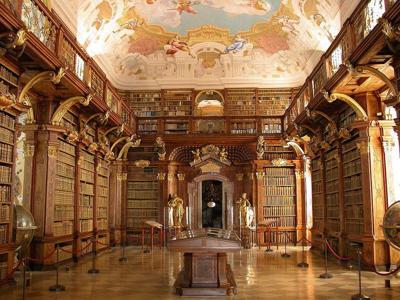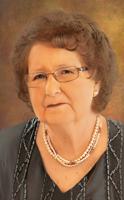Baroque Grandeur.
Your southbound entrance into the Wachau Valley on the Danube River will begin with the captivating splendor of the Melk Abbey perched high above you.
The Abbey was designed as a retreat for Benedictine monks, who are sworn to a life of poverty and simplicity. How odd that it’s a Baroque Palace completely lacking in any type of simplicity or restraint.
Baroque architecture avoids a straight line whenever possible. The aristocracy saw the dramatic style of Baroque architecture and art as a means of impressing visitors and expressing triumph, power and control.
We can only assume that the newly elected Abbott Berthold Dietmayr was more interested in impressing everyone than in the simple life when he began rebuilding the monastery in 1700.
The Abbey was famous for its library which was home to over 80,000 printed books and 2,000 manuscripts. Perhaps Dietmayr wanted to be sure these important prizes were housed in the grandeur they deserved. Perhaps he wanted to reflect the importance of the positions Melk had achieved in religion, science and politics.
The end result is a fantasy-like fortress floating gracefully and elegantly above the Danube.
Baroque palaces (including the Melk Abbey) are built around an entrance of courts, grand staircases and reception rooms of increasing opulence. In other words, the further you go inside the Abbey, the fancier it gets.
There are several areas of the Abbey that are not to be missed. The first is the Imperial Staircase. Lined with sculptures and statues, this staircase was meant to impress.
The Imperial Staircase opens into the Imperial Corridor, which extends 664 feet. The first thing you see is a grand portrait of the first Babenberg, Leopold I, who conquered the fortress at Melk in 976 A.D. The entire corridor is lined with larger than life portraits of the rulers of Austria, with a brief biography underneath each.
The Imperial Corridor runs the length of the Imperial Wing, which is home to the Museum. This area does a good job of educating the visitors to the Abbey about the history and present life at the monastery. It also houses some of the Abbey’s most famous works of art and historical artifacts.
My favorite room was the Library featuring inlaid bookshelves and books bound to match them. The ceiling fresco is a fabulous glorification of the ruling family, where the symbolic representation of Faith dominates.
The Church itself is a wild combination of gold, orange, ocher, gray and green in a fairy-tale décor exuding warmth and richness.
We were able to stand outside of the Abbey as the church bells were ringing and look out over the Danube. It was surreal.
I especially enjoyed our walk back down to the river through the old town area of Melk and then through the forest between Melk and the Danube. It was a lovely, lovely experience.
If you are traveling to Austria, I highly recommend a visit to the Melk Abbey and the surrounding area.
Joy Gawf-Crutchfield owns and operates The Joy of Travel. www.thejoyoftravel.net



















Commented
Sorry, there are no recent results for popular commented articles.